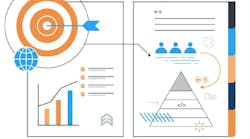Manufacturers are increasingly going direct to their end customers with e-commerce. Digital Commerce 360, a market research firm, estimates that U.S. manufacturers’ B2B e-commerce sales reached $543 billion in 2021—and have been growing at a 16% annual rate since 2016 (almost 1.5x faster than total manufacturer sales).
The pandemic accelerated this shift. Despite this, manufacturer B2B e-commerce sales represent only about 9% of total U.S. manufacturer sales.
Why is this shift not happening even faster? The short answer is because of channel conflict with incumbent distributors and wholesalers who play a vital role in getting a manufacturer’s products to end customers. Given a dependency on channel partners and the revenue at risk, many manufacturers are reluctant to change. But as end customers continue to demand “Amazon-like” e-commerce, manufacturers must deal head-on with the channel conflict and are forced to rethink their go-to-market strategies.
End customers see great benefit from dealing directly with a manufacturer and typically cite three main reasons:
Lower costs. Dealing directly with a manufacturer leads to lower prices on purchases as there is no distributor mark-up.
Improved support. With no middle party, end customers can get what they need directly, and typically faster and more accurately. This can lead to shorter lead times on delivery.
Partnership opportunities. With a closer relationship, end customers may find manufacturers in a better position to help them solve problems – improve productivity, maintain assets, lower costs, or grow revenues.
Similarly, manufacturers see the potential benefits:
Customer intimacy. Opportunities to grow share of wallet – increase volumes, up-sell, and cross-sell. And keep out competitors.
Ensured performance. Greater visibility into product performance, tighter pricing controls, and direct feedback to inform innovation are critical.
Revenue and margin growth. Capture aftermarket product and service sales. Get paid faster. Lower costs to sell and serve with e-commerce. Find new ways to help.
So how should a manufacturer navigate this challenge? We have found the answer for many manufacturers is not a simple yes or no, but rather a more nuanced and carefully thought-out response. Manufacturers need to assess the signs of when to go direct, which lie at the intersection of end customer relationships, product portfolio and service offerings.
End-Customer Relationships
Manufacturers looking to form a relationship in which they are the primary partner, not a distributor, should look for the following signposts:
- Target customer is strategic to a manufacturer – revenue opportunity and market recognition fit with the core offerings of the manufacturer
- The customer wants a direct relationship and seeks out the manufacturer for sales consultation, technical support and/or aftermarket service
- Sales of solutions are vital to growth, but they are difficult due to their complexity, scale or other factors
- The cost to acquire new customers, especially strategic ones, is comparable, or even favors a manufacturer
- Distributors are not helping enough to drive sales, or cannot provide adequate end market or geographic coverage
Product Portfolio
The decision on which products to go direct with is not binary and should focus on which subset of products to offer direct to end customers, versus only through distributors. Positive signs toward going direct include:
- Needing greater control over products – positioning, branding, pricing, assortment
- Needing end customer data and feedback for R&D and future product development that cannot be obtained with alternative approaches
- Difficulty identifying the right solutions due to the complexity or uniqueness of an end customer’s operations, scale or other factors
Service Offerings
Services are important to end customers, which require manufacturers to carefully determine how they should participate and figure out the right role for distributors and other third parties. Manufacturers should go direct when:
- It’s of high strategic importance to both the manufacturer and end customer
- Customer wants a direct relationship
- There’s opportunity to grow service revenues and margins by leveraging expertise and customer relationships
- There’s significant opportunity for product pull through from services that is not being realized with services delivered by a third-party (e.g., aftermarket parts, replacement)
- Service delivery requires direct, close coordination (e.g., remote monitoring on manufacturer’s products)
The decisions on which end customers to target, and which products and services to offer in the context of going direct, are strategic and not formulaic in nature; the weight placed on these factors will vary in each situation. With this in mind, we recommend manufacturers take several actions to help them determine the best course for going direct.
Start with End Customers
A well-thought-out growth strategy will include a clear understanding as to which current and prospective customers and segments are strategic to your business. From there, manufacturers need to assess customers’ current value to their business vs. what might be left on the table due to how distributors are serving them.
Several questions should be answered: are there opportunities to sell broader solutions that are not being captured with the help of distribution partners? Are end customers looking for more help from your company than what they can receive elsewhere? Can you create win-win relationships better with a direct relationship? Getting a clear view on these questions is critical.
Identify Products to Offer Direct
While the simplest answer is to offer all products to all parties, it may be too risky of an initial step. Manufacturers can work to identify products that are not performing well under distributors. They can also determine what customer feedback is needed on which products, the importance of that feedback to the product roadmap, and the best way to obtain feedback. One objective of this assessment is to clearly assign products to sell direct, to distributors or to both, including conditions for selling into specific geographies and end markets. Manufacturers may be able to carve out exclusive products for distributors willing to invest effort into the brand, positioning or selling solutions. And, to minimize backlash, manufacturers should not undercut distributors on pricing or inventory allotments.
Determine the Services
Manufacturers can improve their positioning and reduce risk of distributor conflict by offering value-added services to end customers. A strong case for going direct can be made when there is the combination of an attractive service growth opportunity that leverages a manufacturer’s expertise, and potential for product pull-through. Manufacturers can work with distributors to find mutually beneficial roles, such as product fulfillment related to service delivery and “factory approved” services.
The trend of manufacturers going to direct to end customers is likely to continue, but there are win-win opportunities to be captured for both manufacturers and their distributor partners. Developing a well-thought-out approach is the best place to start.
Michael Connerty is the Founder and Managing Partner of Groove Strategy Group LLC, a strategy consulting firm focused on helping B2B companies grow their business profitably.
Jennifer Kozak works with Groove Strategy Group LLC as a lead consultant helping B2B companies with profitable revenue growth. With over 15 years of experience, her expertise includes strategic growth planning, commercial excellence, go-to-market transformation, market / opportunity assessment and entry planning.





